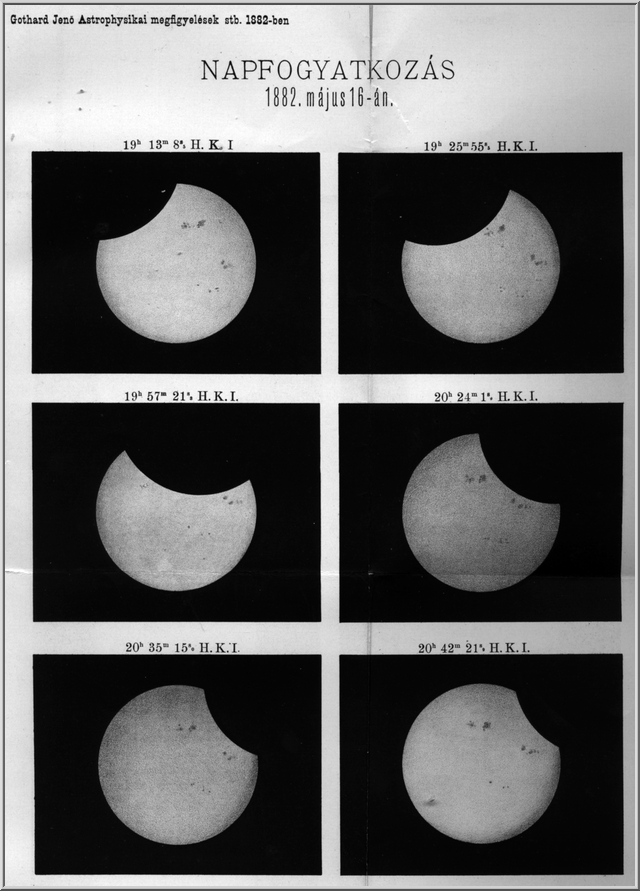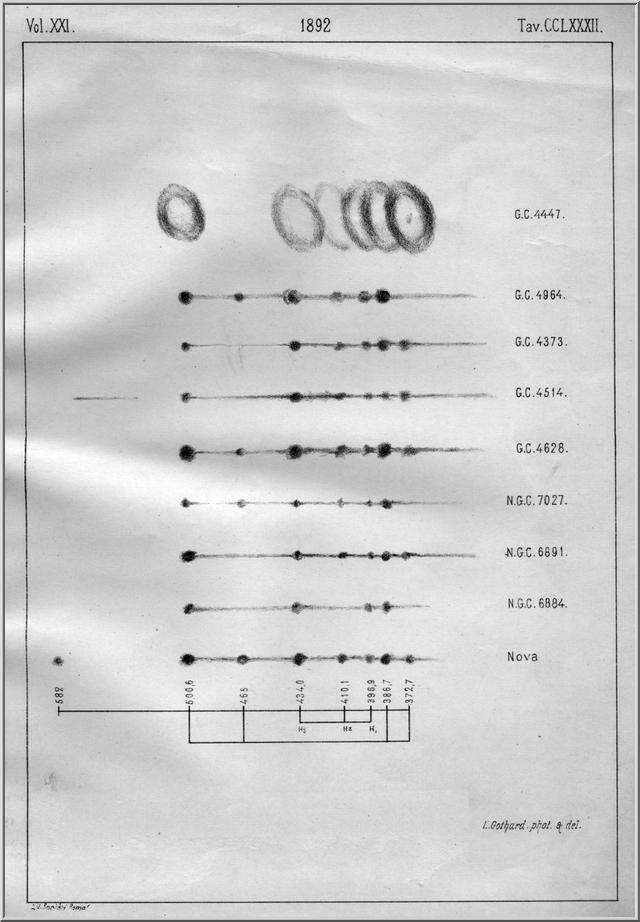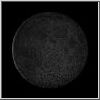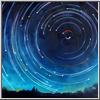Activity
At the time of the foundation, Jenő Gothard's aim was a spectroscopic analysis of emission stars and comets, while Sándor Gothard observed major planets and the surface of the Sun. By successfully applying photography in astronomy, Jenő Gothard entered the history of science for ever. For example, he managed to produce a world-famous series of photos of the partial solar eclipse on 16 May 1882.
After 1883, he turned his attention to the examination of the spectrum of the β Lyrae. In his observations he pointed out the periodical appearance and disappearance of hydrogen and helium lines. However, his discovery did not get any attention, as there was no sufficient astronomical background for the interpretation of the phenomenon, which gained significance only later. In the scientific communitiy of the turn of the century he attracted attention to his spectroscopic examinations of comets. He photographed a comet indiscarnible for the eye for the first time (Barnard-Hartwig Comet, 1886).
From 1885 on, he almost completely abandoned visual observations and turned to the new technologies of the age, spectrography and astrophotography. In 1885, he recorded a supernova in the Andromeda Galaxy.
From 1886 on he was completely engaged in spectralphotometric examination of clusters, comets and gaseous nebulae. In the autumn of 1886, he was the first to detect the central star of the Ring Nebula (M57) by means of photography.
Until 1891, during the first 10 years after foundation, Gothard worked successfully in the field of spectroscopy and astrophotography.
In 1892, while studying the spectrum of Novae Aurigae, he revealed a principal connection between novas and planetary nebulae. He convincingly proved that "... the spectrum of the nova is identical to the spectrum of planetary nebulae" (Jenő Gothard: Értekezések a Matamatikai Tudományok Köréből, 1892). This discovery was the most outstanding result of his work. His result is regarded by experts worldwide as one of the predecessors of theories on the later stages of stellar evolution.


Gothard's photo series of the partial solar eclipse in 1882.
The spectra of Nova Aurigae and a few planetary nebulae.
He also took a well measurable comet-spectrum photo of the Comet Swift in 1892.
He was renown for his research worldwide. In 1883, he was accepted as a member of the Royal Astronomical Society; in 1884 member of the association of leading European astronomers, the German Astronomische Gesellschaft; and in 1890 a corresponding member of the Hungarian Academy of Sciences.
In 1894/95 the first Hungarian hydroelectric power plant was built in Ikervár, Vas County. The Vasvár County Electric Works Inc. was founded to utilize the produced electric power, with Jenő Gothard as its first technological manager. Besides being engaged in management and organization, he also designed and patented devices not only for astronomical purposes. New tasks and technological challenges reduced the intensity of his astronomical activities.
Only after many years could he return to astronomy for a short period, starting in 1901. With the same precision as earlier he took a high quality and high resolution spectrum of the "new star", Nova Persei appearing in Perseus constellation.
In the final period of his rich and productive life, the scientist and polymath Jenő Gothard travelled a lot. Among other countries he toured Egypt, pursuing his scientific and archaeological passions of collection.
This attractive and modest person, a methodical researcher, who had excellent experimenting abilities, passed away in 1909. His intellectual heritage, however, has been passed on to the grateful generations following him.


Sample page of Gothard's observation logbook from 1881.
The Orion nebula and its environment photographed by Gothard.
His observations and scientific results appeared in a special volume in German published by the observatory, entitled "Publikationen des astrophysikalischen Observatoriums zu Herény". Articles were issued about his life's work in the series of the Hungarian Academy of Sciences, entitled "Értekezések a Matematikai Tudományok Köréből". The series called "Meteorological Observations at the Herény Observatory" was published from 1890 to 1918.






